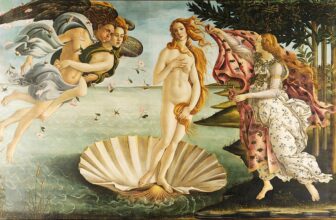Meaning of The Marriage of Bacchus and Ariadne
Shopping Ads: Invest in Hidden Masterpiece: Rare Antique Oil Paintings For Sale. Limited Originals Available 💰😊 Are you looking for authentic hidden masterpiece? Explore old master antique oil paintings from the Renaissance and Baroque eras. From 16th-century portraits to 18th-century landscapes. Authenticity guaranteed, Old Master antique oil paintings for sale. Shop Now! 🎨 Renaissance And Baroque Art Old Master Portrait Paintings Landscape Antique PaintingsIn the sun-drenched hills of 16th-century Venice, where myth met religion and classical antiquity danced with Christian ideology, a painter named Giovanni Battista Cima, more famously known as Cima da Conegliano, created a scene that continues to captivate viewers centuries later. The Marriage of Bacchus and Ariadne is more than a visual retelling of a myth; it is a radiant fusion of poetry, symbolism, and Renaissance ideals.
To truly appreciate this masterpiece, one must journey through its mythological roots, analyze its painterly techniques, and uncover its enduring symbolism, a marriage of story and canvas, much like the divine union it so elegantly depicts.
The Myth Behind the Masterpiece
The story of Bacchus and Ariadne originates in classical mythology and has been immortalized by Roman poets like Ovid and Catullus, and later adapted by Renaissance humanists. Ariadne, the daughter of King Minos of Crete, falls in love with the Athenian hero Theseus. She helps him navigate the Labyrinth and defeat the Minotaur by giving him a ball of thread. After their triumph, she flees with Theseus, only to be abandoned by him on the island of Naxos.
Enter Bacchus (also known as Dionysus in Greek mythology), the god of wine, festivity, and ecstasy. Upon discovering the desolate Ariadne, Bacchus instantly falls in love with her. He lifts her from despair and offers her not only companionship but also immortality. Their union symbolizes divine redemption, the triumph of love over loss, and spiritual transcendence.
It is this moment, the celestial marriage, that Cima da Conegliano chooses to eternalize in his oil painting.
Who Was Cima da Conegliano?
Born around 1459 in the small town of Conegliano, located in the Veneto region of northern Italy, Giovanni Battista Cima was a master of Venetian Renaissance painting. Trained within the orbit of the Venetian school, he was profoundly influenced by Giovanni Bellini, whose soft landscapes and luminous colors set the tone for Venetian art.
Cima’s work is characterized by:
Luminous landscapes
Tranquil, balanced compositions
Clear, clean outlines
Gentle expressions and humanism
Though often known for religious compositions, Cima also painted mythological themes, one of the rare ventures being The Marriage of Bacchus and Ariadne, created around 1505–1510, a time when artists across Europe were rediscovering classical themes and integrating them with Christian iconography.
What’s Happening in the Painting?
At first glance, The Marriage of Bacchus and Ariadne presents a pastoral, almost idyllic scene. But beneath the surface lies a layered narrative.
Bacchus, youthful and regal, places a ring on Ariadne’s finger. His body is adorned with vines, his expression tender but dignified.
Ariadne, standing opposite him, receives the ring with a gentle grace, her gaze turned slightly away, as if overwhelmed by the moment or caught between past sorrow and present joy.
The background shimmers with a dreamlike Venetian landscape, soft hills, distant water, and atmospheric light that gives the scene an otherworldly serenity.
Surrounding them are satyrs, nymphs, and followers of Bacchus, celebrating with music and dancing.
Above, the constellation Corona Borealis (associated with Ariadne) twinkles faintly, suggesting her future immortality.
It’s a scene of celebration, but also transformation. The abandonment by Theseus is not shown, yet its ghost lingers in Ariadne’s posture. The focus is instead on renewal, the moment where mortal sorrow gives way to divine love.
Artistic Style and Medium
This work is a classic example of High Renaissance painting within the Venetian school, but with Cima’s distinct tone: calm, introspective, and luminous.
Medium and Technique
Oil on panel, a common medium among Venetian artists for its ability to create rich, layered tones and delicate transitions between light and shadow.
Cima’s technique shows his love for naturalism, figures are rendered with anatomical precision, yet softened by the glowing atmosphere and lyrical composition.
Stylistic Elements
Linear clarity: Each figure is outlined cleanly, creating a harmonious balance.
Atmospheric perspective: Background elements fade with distance, enhancing depth.
Color palette: Warm earth tones and subtle blues evoke both tranquility and majesty.
In comparison to the more dramatic or muscular interpretations of myth seen in artists like Michelangelo or Titian, Cima’s approach is meditative, pastoral, and spiritual.
Symbolism and Allegory
Every element in The Marriage of Bacchus and Ariadne serves a symbolic function.
1. The Ring
The central act of the painting, the placing of the ring, is a symbol of union, but not just romantic. It signifies the marriage of the divine and the human, the material and the eternal. In Renaissance Christian allegory, this can be seen as analogous to the soul’s union with God.
2. Ariadne
She represents abandonment, loss, but also redemption. Her acceptance of Bacchus’s love mirrors the human soul being lifted from despair by divine grace.
3. Bacchus
Traditionally the god of ecstasy, revelry, and chaos, Bacchus here takes on a more noble, salvific role. He becomes a symbol of divine transformation, turning pain into joy, mortality into immortality.
4. The Attendants
The satyrs and maenads celebrating in the background reflect the worldly pleasures associated with Bacchus. However, in this sacred moment, even their revelry seems subdued and elevated, suggesting that earthly pleasure can be sanctified through love.
5. The Landscape
Cima’s landscape is more than just scenery. The gentle hills and serene waters echo the theme of peace after chaos, love after loss. It serves as a visual metaphor for internal harmony.
6. The Constellation (Corona Borealis)
The faint but visible crown of stars in the sky links to the mythological detail that Bacchus, upon marrying Ariadne, placed her bridal crown in the heavens. It marks her divinization and eternal memory.
What Does It Represent?
At its core, The Marriage of Bacchus and Ariadne represents:
1. Redemption Through Love
Ariadne’s story is one of betrayal and abandonment, yet she finds new purpose and immortality through her union with Bacchus. This reflects broader humanistic ideas of the Renaissance, that through love and transformation, one can transcend suffering.
2. The Integration of Pagan and Christian Thought
Though mythological, the painting fits comfortably within the Christian spiritual framework. Ariadne’s elevation can be read as the soul’s journey to divine union, not unlike depictions of the Virgin Mary’s Assumption. Bacchus, often seen as a chaotic force, is reimagined as a Christ-like figure who offers salvation.
3. The Power of the Feminine Divine
Ariadne’s transformation into a celestial being suggests a reverence for the feminine as both mortal and eternal, broken yet radiant. Her journey mirrors many Virgin Mary tropes in Christian iconography.
Where Is the Painting Today?
The Marriage of Bacchus and Ariadne is currently housed in the Getty Center in Los Angeles, California, part of the J. Paul Getty Museum’s collection. The museum, known for its wide array of European paintings, acquired the piece to deepen its representation of early Renaissance mythological art.
Thanks to its pristine condition and meticulous preservation, modern audiences can view the painting much as it appeared over 500 years ago, and scholars continue to analyze it for its technical brilliance and layered meaning.
Legacy and Influence
Though not as widely reproduced as Botticelli’s Primavera or Titian’s Bacchus and Ariadne, Cima’s version holds its own as a quiet masterpiece, a poetic and restrained counterpart to the more theatrical interpretations of the same myth.
Its influence can be seen in:
Later Venetian pastoral scenes
The integration of mythology and spirituality in early modern European art
The idea of elevating human love to divine union, a theme echoed in poetry, opera, and philosophy
Moreover, Cima’s treatment of the subject influenced how future artists viewed myth not as mere fantasy, but as vehicles of philosophical depth and emotional truth.
A Painting That Speaks Across Time
The Marriage of Bacchus and Ariadne by Cima da Conegliano is more than a beautiful artifact of Renaissance art, it is a canvas woven with threads of myth, theology, love, and redemption. It invites viewers into a world where the divine and human meet, not in thunder or miracle, but in a gentle exchange, a ring, a gaze, a landscape glowing in golden silence.
By grounding the myth in serenity rather than spectacle, Cima offers a vision of love that transcends time: one where even the most painful abandonment can give way to eternal joy. In a world often marked by betrayal and sorrow, this quiet promise of transformation is what makes the painting eternally relevant, and profoundly moving.



